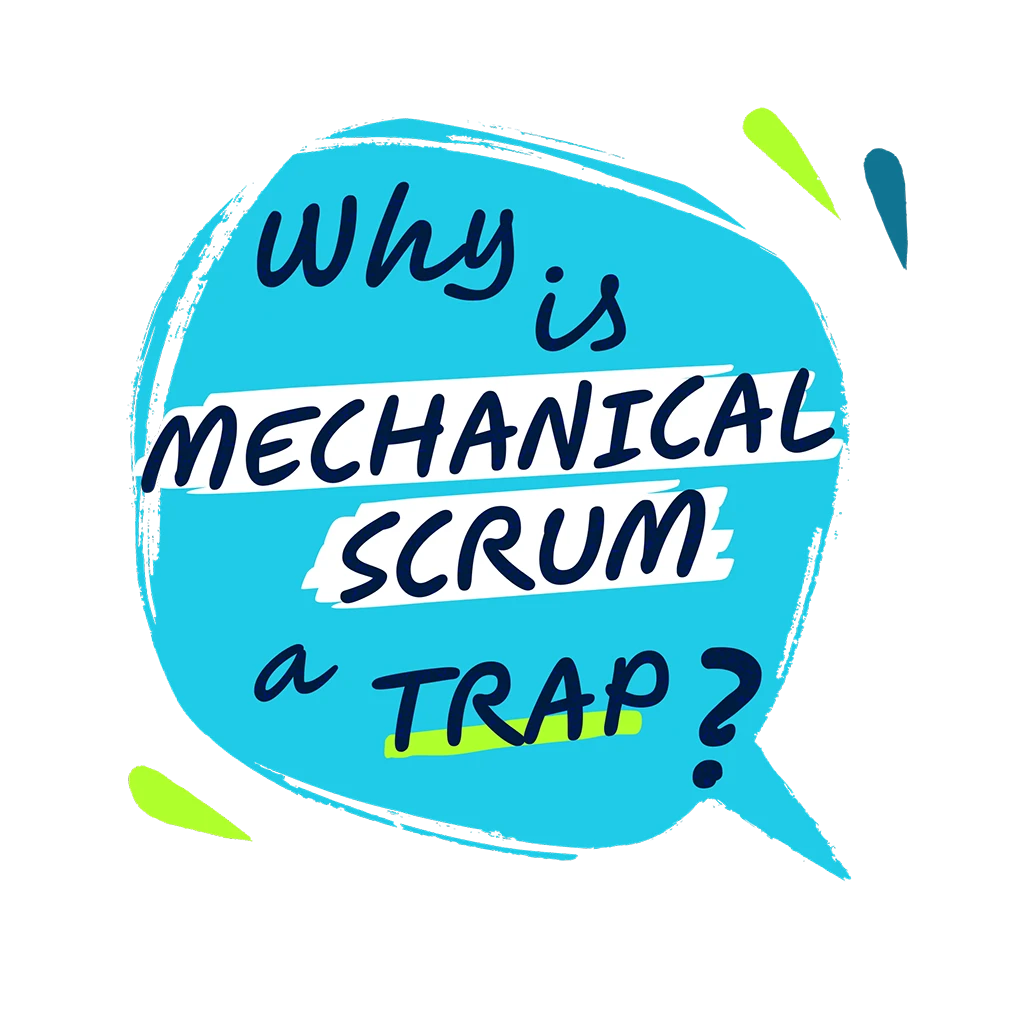Mechanical Scrum can become a trap when we follow Scrum without understanding Scrum. The Scrum framework is a great place to start in order to deliver value, but it shouldn’t be itself a destination.
Scrum is widely embraced because we see it working in other teams and organisations. It may seem simple because it is a framework with just three artefacts, three accountabilities, and five events.
Still, if it is not really understood, it can lead to a counterproductive trap known as “mechanical Scrum.” This occurs when teams prioritise rigid adherence to Scrum rules over the core agile principles of flexibility and innovation, undermining the framework’s inherent benefits.
1. Context matters:
When teams adhere too strictly to rules for the sake of rules, or when they are just imitating what they’ve seen working in other places without considering their environment, product vision and goals’ unique needs, they risk falling into a checklist mentality. This can lead to the process taking precedence over the product’s value and adaptability to changing circumstances.
2. Team silos:
Scrum’s strengths are fostering team collaboration and self-management. A mechanical approach can undermine this by reducing Scrum to a set of procedures to be followed rather than a framework that encourages active team engagement, creativity, and problem-solving.
3. Focus on deadlines:
Scrum aims to deliver maximum value to the customer. However, a mechanical approach often focuses on completing the iterative cycles and meeting deadlines or prescribed scope, regardless of whether the work is aligned with the customer’s evolving needs and feedback.
4. Aversion to change:
A fundamental Agile principle is embracing change, even late in development. When teams become too focused on following Scrum by the book, they may become resistant to changes that require deviation from their established plans or routines, hindering the product development’s success.
Scrum provides a minimal but robust framework for efficient product building and value delivery, but its misapplication as a rigid set of rules can be detrimental.
It is crucial to remember that the heart of Scrum lies on the three pillars of empiricism: transparency, inspection, and adaptation, in addition to the emphasis on understanding and delivering iteratively customer value with the use of team collaboration.
Teams should be wary of falling into mechanical Scrum and instead focus on embracing change and delivering value sooner to the customer. This approach ensures that Scrum remains a dynamic, adaptable tool rather than a restrictive set of procedures.


